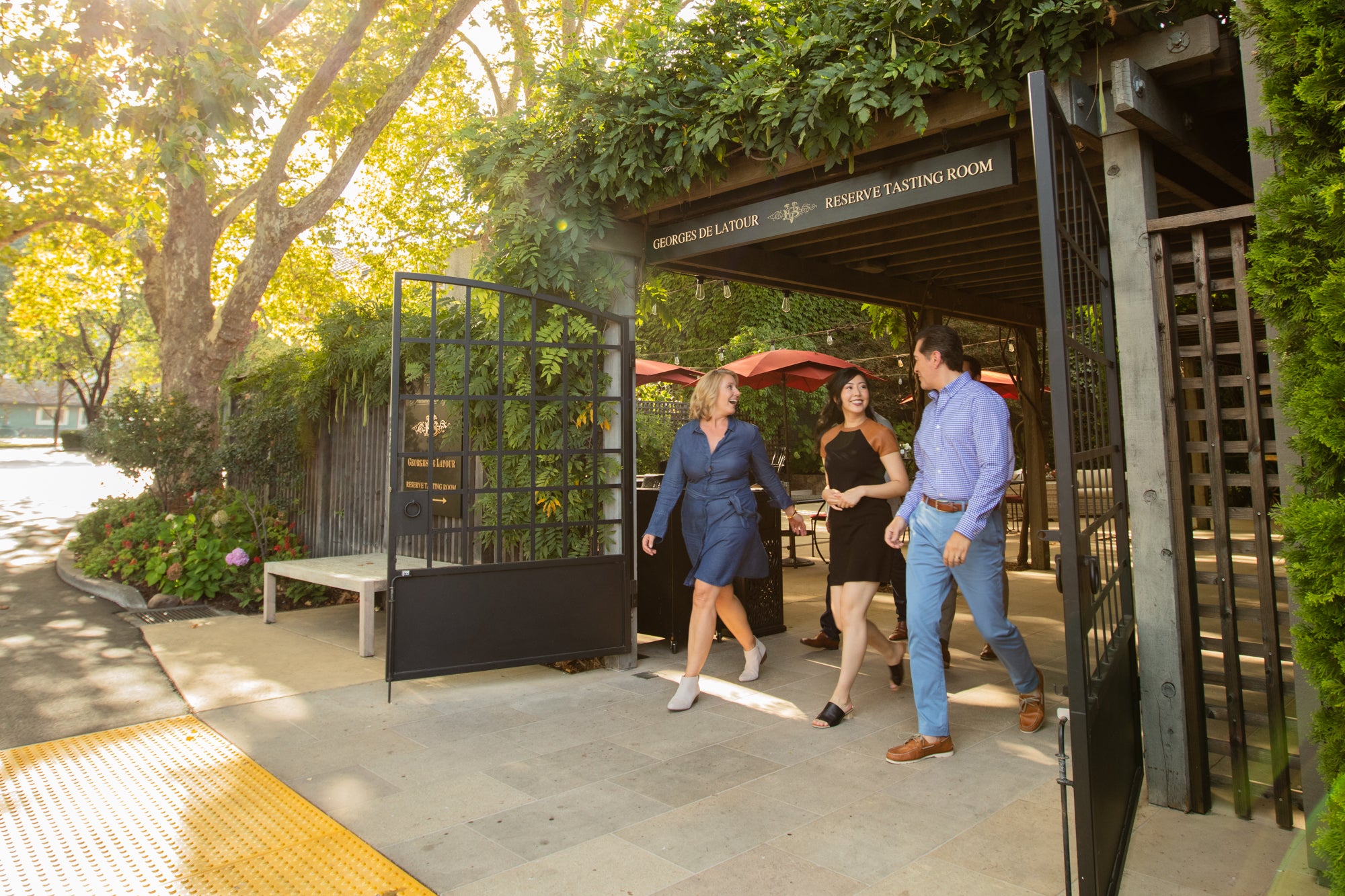Exceptional Wine and Cheese Pairings

The art of pairing wine and cheese is a celebration of infinite flavor profiles, textures, and sensory experiences waiting to be explored. We're excited to present not just three of our most sophisticated pairings crafted from our renowned wines and exceptional cheeses but also our tips on storing and serving cheese. These offerings exemplify the grandeur and commitment to excellence that defines the Beaulieu Vineyard experience.
Georges de Latour Private Reserve Cabernet Sauvignon & Aged Gouda
The Georges de Latour Private Reserve Cabernet Sauvignon has been widely recognized as the benchmark of Cabernet Sauvignon from Rutherford, for its depth, complexity, and longevity. With its impressive structure, rich, dark berry flavors, and hints of spice, this Cabernet Sauvignon offers an exquisite sensory experience. Paired with an aged Gouda, a cheese known for its unique caramel sweetness, nutty undertones, and firm, almost crunchy texture, the combination creates a memorable fusion of flavors. The profound intensity of the Cabernet Sauvignon harmonizes with the robust, mature notes of the aged Gouda, making every bite and sip a testament to the splendor of pairing a bold wine with a bold cheese.
Tapestry Reserve Red Wine and Aged Comté
Our Tapestry Reserve Red Wine is a harmonious blend of classic Bordeaux varietals, intricately woven together to offer a symphony of flavors. Rich blackberry and dark cherry notes, coupled with hints of caramel and spice, create a complex, well-rounded, and sophisticated wine experience. Pair this with an aged Comté, a cheese lauded for its pronounced nutty flavor and slight sweetness, to create a luxurious tasting experience. The full-bodied elegance of our Tapestry Reserve Red Wine effortlessly complements the Comté, making this pairing a delightful exploration of texture and taste.
Reserve Chardonnay & Triple-Crème Brie
Our Reserve Chardonnay captures the richness and complexity of the Napa Valley. With its expressive fruit flavors of fresh apple and creamy lemon curd, coupled with nuances of spice and toasty graham cracker crust, it's a wine of depth and elegance. Pair this inviting wine with a Triple-Crème Brie, a cheese renowned for its creamy, buttery profile and decadent, mild flavor. The richness of the brie beautifully complements the balanced acidity of our Chardonnay, creating a duo that is smooth, sophisticated, and utterly luxurious.
Storing Cheese
Temperature is key: The best temperature to store most cheeses is between 35 and 45 degrees Fahrenheit (1.7 to 7.2 degrees Celsius), typically found in your refrigerator's vegetable drawer.
Humidity matters: Cheese needs a balance of humidity to stay fresh but not become overly moist. To maintain the perfect balance, wrap your cheese in specialty cheese paper, wax paper, or parchment paper. Avoid using plastic wrap if possible, as it can encourage moisture build-up and inhibit the cheese's ability to breathe.
Avoid cross-contamination: Store different types of cheese separately to prevent strong flavors from influencing milder cheeses. Keep blues and other strongly-scented cheeses in a separate airtight container.
Don’t freeze your cheese: While freezing cheese can prolong its life, it can significantly alter its texture and taste. Most cheese lovers and connoisseurs advise against it.
Serving Cheese
Serve at room temperature: To fully appreciate the flavors and aromas of a cheese, serve it at room temperature. Take your cheese out of the refrigerator at least an hour before serving to allow it to "breathe" and warm up.
Respect the cheese's shape: When cutting and serving cheese, try to maintain its original shape. For example, a Brie should be sliced like a pie, while a log-shaped goat cheese should be cut into rounds.
Serve with an array of accompaniments: To enhance the tasting experience, offer an assortment of breads, crackers, and accompaniments like honey, nuts, fresh and dried fruits, olives, and charcuterie. But remember, the cheese is the star of the show, so these should complement, not overwhelm, the flavors of your cheese selection.
Choose the right knife: Each type of cheese deserves its own knife - a wide, flat knife for soft cheeses, a fork-tipped knife for firmer cheeses, and a spade for hard, aged cheeses. This will ensure clean cuts and avoid cross-contamination of flavors.


Open During renovations
book a tasting




